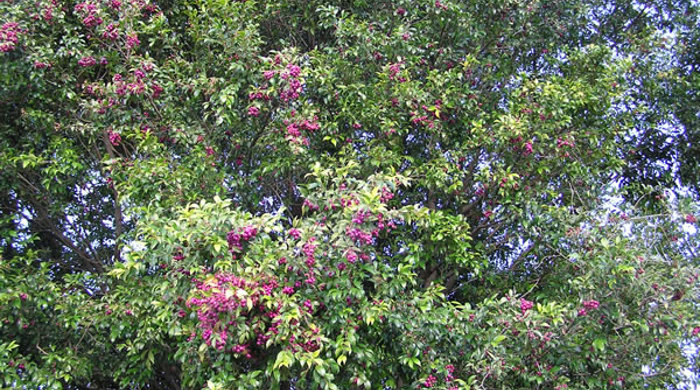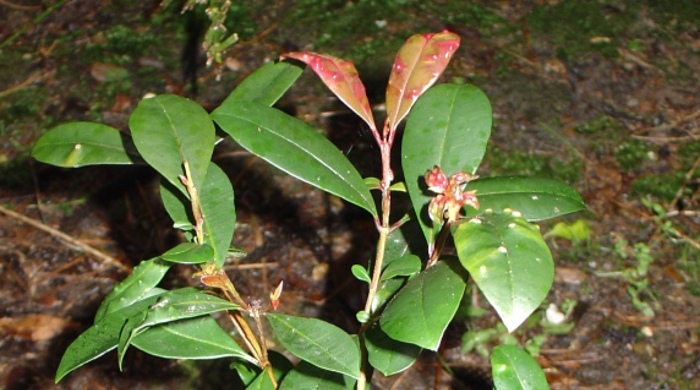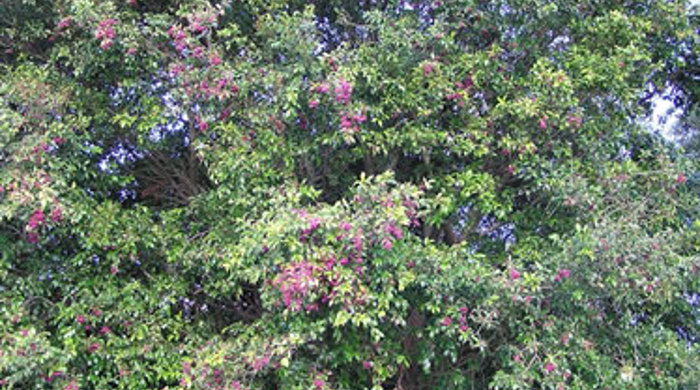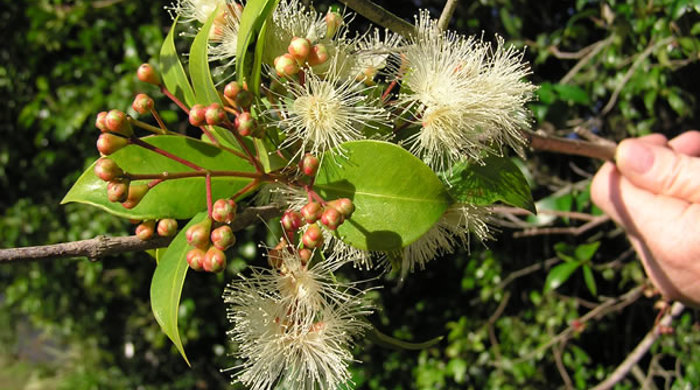Syzygium australe
Brush cherry
Also known as:
Purple monkey apple
Family: Myrtaceae
Origin: Australia
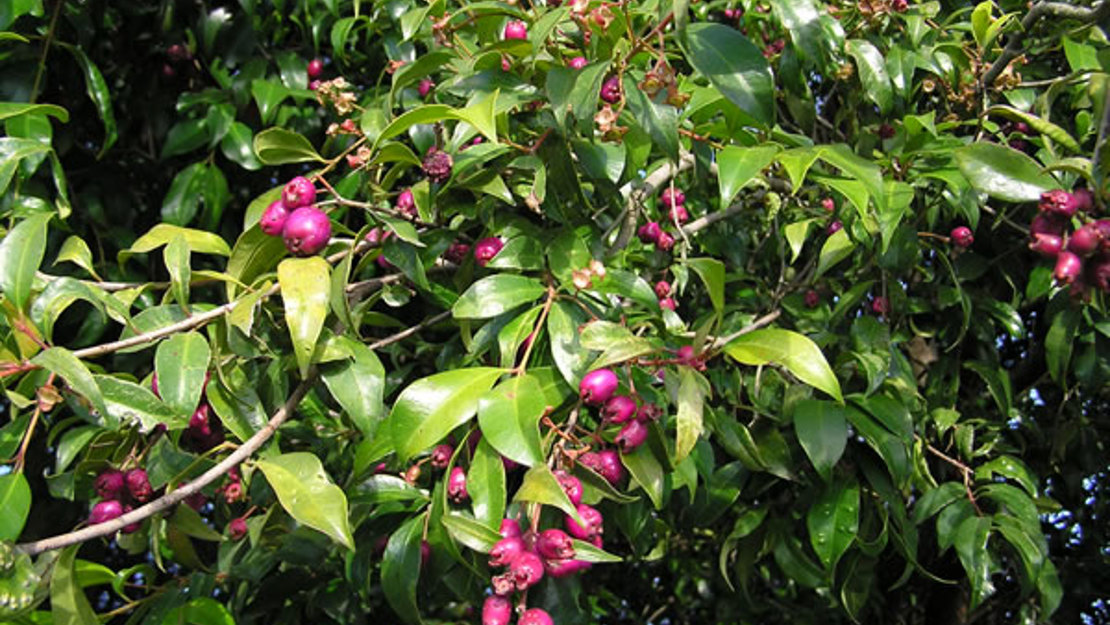
Regional Pest Management Plan (RPMP) status
- Not a legally declared pest
General description
Large shrub or small tree < 12 m tall. Leaves are < 3.5 x 10 cm, glossy, green, oval and pointed. Flowers are white with prominent stamens and are borne in clusters of < 25 in January-July. Fruit is < 20 x 15 mm, purple, glossy and contains one seed.
What you need to know
Although brush cherry is not a legally declared pest plant, it may still be invasive in some situations. Consider lower risk alternatives for your garden, such as native plants.
Habitats
Open forest, scrub, riparian margins, pine plantations, urban areas, roadsides.
Dispersal
Seeds dispersed by birds and soil movement.
Impact on environment
May outcompete and displace native plants.
Control
Site management
Follow up treated areas 3 times per year. Encourage natural regeneration of native plants or replant treated areas where possible after 2-3 treatments to establish dense ground cover and minimise reinvasion.
Recommended approaches
Physical control
Method: Dig out.
Plant parts requiring disposal: Seeds.
Disposal options: Remove to greenwaste or landfill if practical.
Biocontrol
Biocontrol is currently not available for this species.
Community agrichemical control recommendations
No qualifications: Cut stump and paste freshly cut base of stems with metsulfuron gel.
Basic Growsafe certified: Cut stump and spray freshly cut base with 1g metsulfuron-methyl per 1 L of water.
Certified Handler/Experienced agrichemical user: Drill and inject trees with 10g metsulfuron-methyl per 1L of water if safe to do so. Drill 18mm holes (tangentially angled downwards) in a spiral up the trunk. For 50mm stems drill one hole.
For 100mm stems drill two holes. For larger stems drill holes 150mm apart.
Foliar spray seedlings with 5g metsulfuron-methyl per 10L of water and 20ml penetrant
Safety notes
Large trees must not be drilled that are closer than 1.5 times the height of the tree from paths, walkways and property.
Trees over 4 metres in height should be removed by a qualified arborist.
Caution: When using any herbicide or pesticide please read the label thoroughly to ensure that all instructions and safety requirements are followed.
